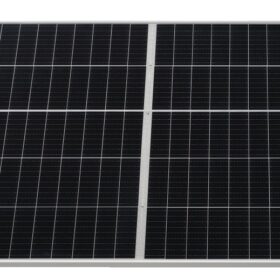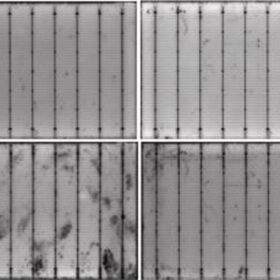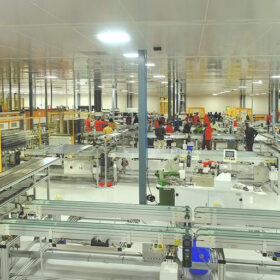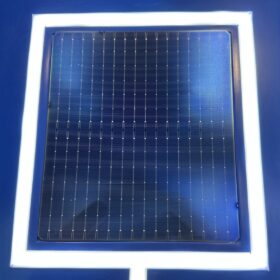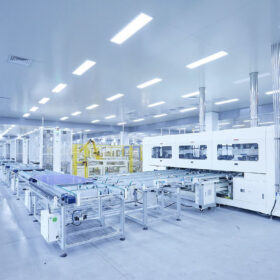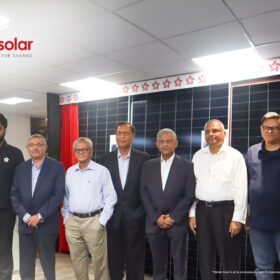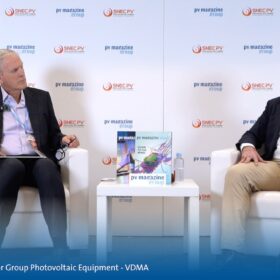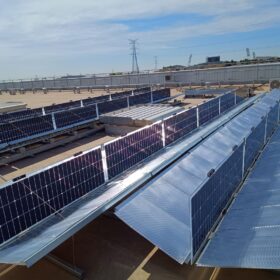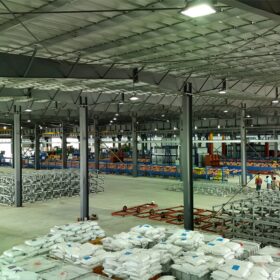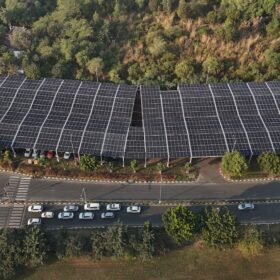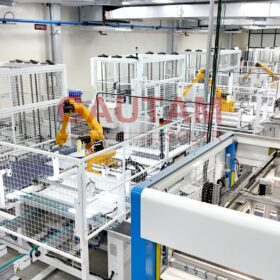Risen Energy hits 740 W average for mass-produced HJT solar module
Risen Energy says it has achieved an average power output of 740 W for its mass-produced heterojunction (HJT) solar module, with certified cell efficiency of 26.61% and module efficiency of 24.81%, according to China’s Fujian Metrology Institute. Encapsulation losses were limited to 1.8%.
Researchers warn of ‘hidden contaminants’ that could increase TOPCon, HJT solar module humidity-induced degradation
Australian researchers have identified five contaminants that could increase damp heat-induced degradation in TOPCon and heterojunction cells and modules. Their analysis has shown these contaminants could originate from improper handling during cell or module processing.
‘Solar module prices will soon go back to over $0.12/W’
The global solar module industry is expected to regain a sustainable balance in the next six months, Yana Hryshko, head of Solar Supply Chain Research for Wood Mackenzie, told pv magazine. She explains why solar module prices may increase soon, suggesting that Tier 1 modules prices could reach $0.14-$0.15/W by the end of this year, and discusses how consolidation is materializing within the global PV industry.
Vikram Solar expands PV module capacity to 4.5 GW
Vikram Solar has expanded its PV module production capacity to 4.5 GW with the addition of a 1 GW line at Falta facility in West Bengal.
All solar cell efficiencies at a glance – updated
The research group led by Professor Martin Green has published Version 65 of the solar cell efficiency tables. There are 17 new results reported in the new version.
Solving the UV problem of n-type solar
Laboratory testing has revealed that some negatively-doped, “n-type” tunnel oxide passivated contact (TOPCon) and heterojunction (HJT) solar modules are susceptible to ultraviolet (UV) light-related damage and degradation. That could mean trouble down the line, if modules in the field begin to show UV-related performance loss. Manufacturers are implementing solutions at cell and module level.
Reliance to commercialize perovskite, back-contact HJT-IBC solar by 2026
Reliance Industries’ new energy business is currently developing first-generation bifacial solar panels using indigenized HJT technology with 26% cell efficiency. It is also working on perovskites and back-contact HJT-IBC, which it expects to commercialise within the next two years.
Vikram Solar unveils 20-busbar bifacial heterojunction module
Vikram Solar has unveiled the Suryava bifacial heterojunction (HJT) module with efficiency level exceeding 23%. The module is built with 20-busbar, G12 solar cells.
VDMA expects copper metallization to take off in next 2 years
At SNEC 2024 in Shanghai, pv magazine spoke with Puzant Baliozian, lead consultant of sector group photovoltaic equipment for Germany’s Machinery and Equipment Manufacturers Association (VDMA). He says tunnel oxide passivated contact (TOPCon) technology will dominate the solar market in the next 10 years and expects module manufacturers will compete to develop more creative product designs. He also believes that copper metallization will gain market share in heterojunction (HJT) module production in the next years. “In the upcoming decade, we will have less than mg/W of silver being used for both TOPCon and HJT technologies,” he stated.
Spanish startup offers pre-assembled vertical rooftop PV systems equipped with reflectors
FutureVoltaics says it has developed pre-assembled, reflector-based vertical rooftop PV systems. The systems feature 175 W heterojunction bifacial solar modules and special reflectors on both sides.
